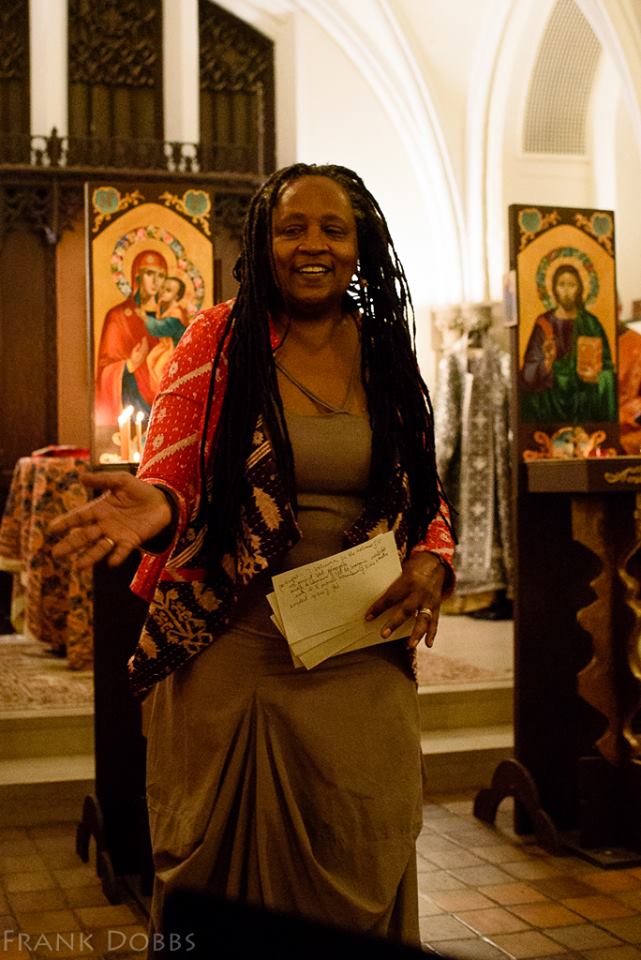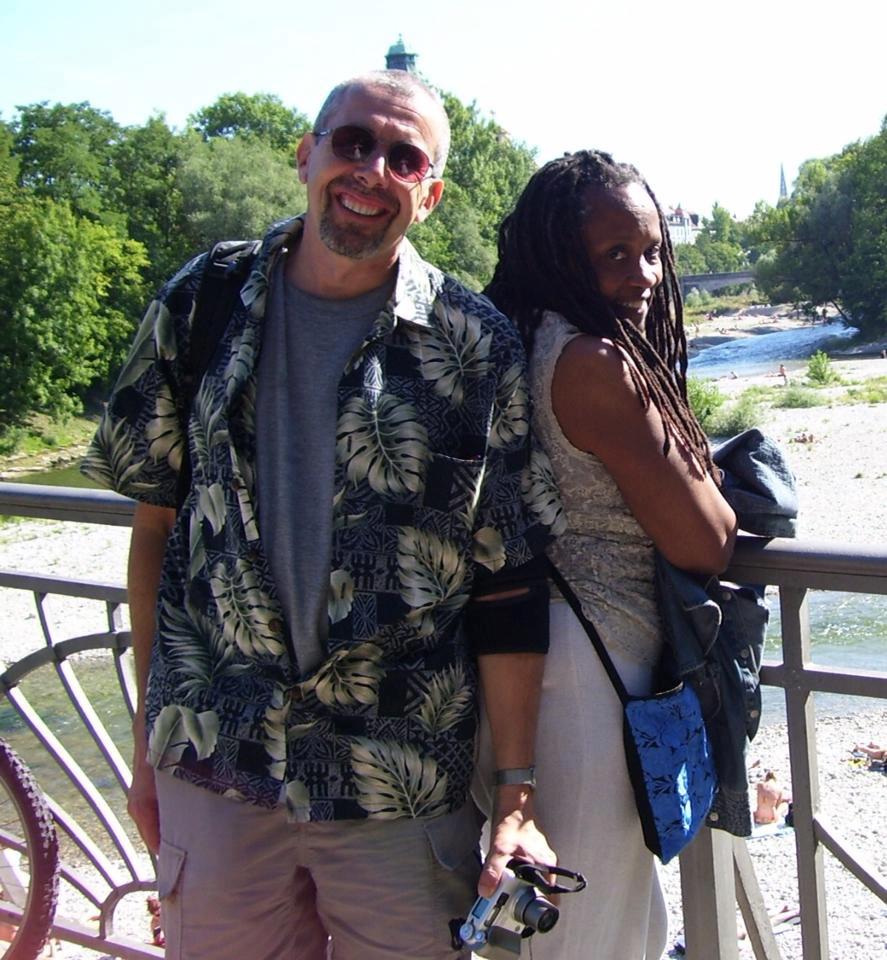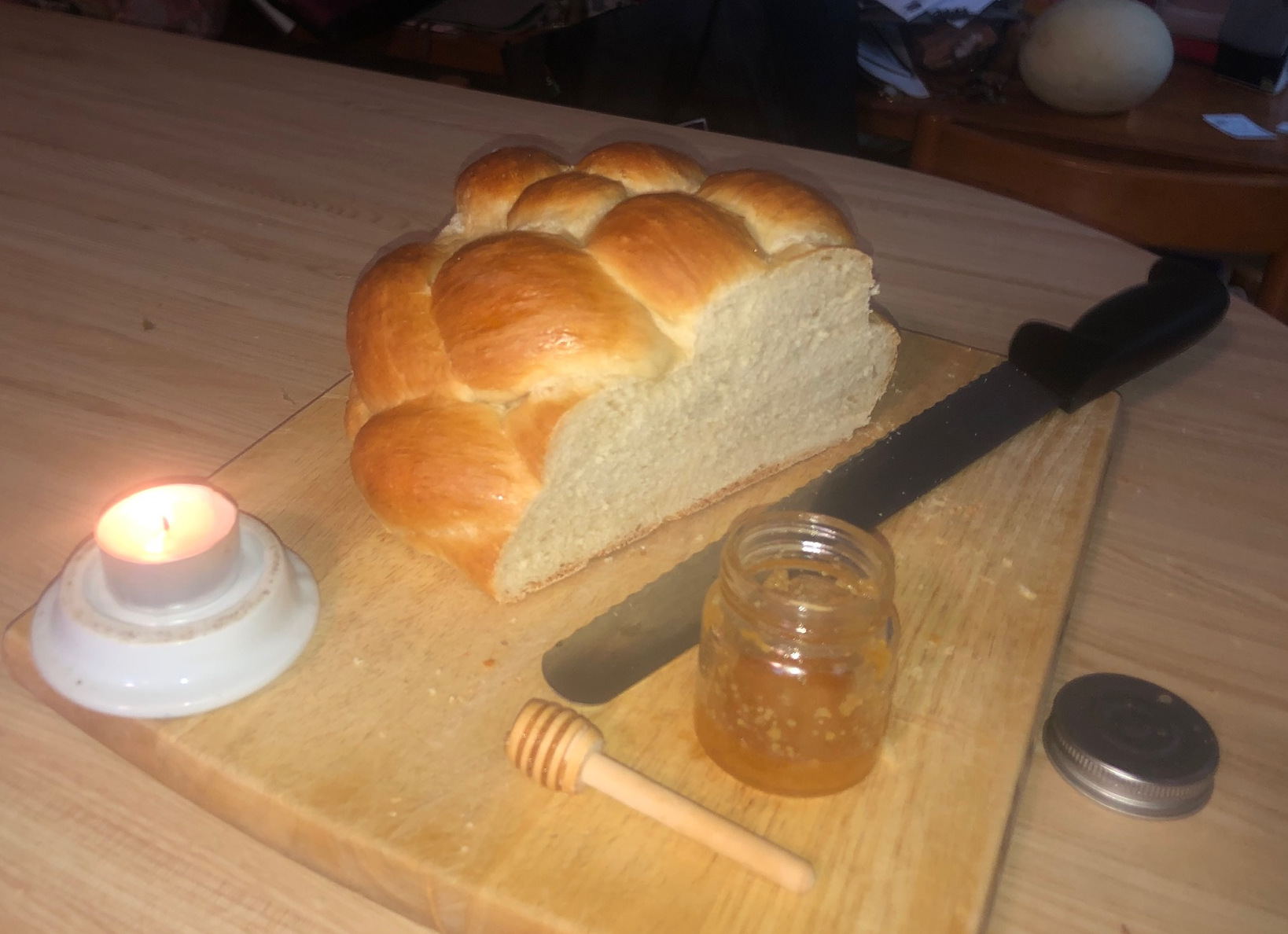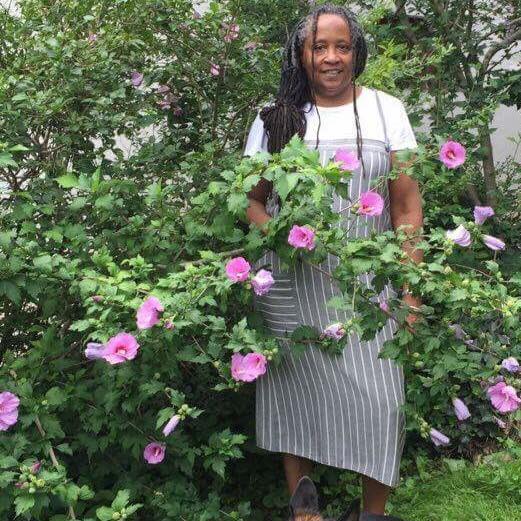
Our Woman of the Week is Judith Scott, choir director at St. Gregory the Theologian mission in NYC:
“Becoming Orthodox is the culmination of a spiritual journey after years of searching, sometimes consciously and sometimes unaware. Mid-career as a high school teacher and school leader, I returned to the Episcopal Church. I needed prayer and a community of believers to help me understand and bring hope to traumatized communities and, of course, to myself as I lived through the tribulations and joy that life brings especially to distressed urban neighborhoods. For the first time, I met and worshiped with female clergy, and recognized how the impossibility of such a vocation had been taught and ingrained in my personal and religious understanding for my life. I entered Seminary after I retired and hoped to become a minister. I took a course in Early Church History with Professor John McGuckin, who is an Orthodox priest, a scholar, and--as time went on--a mentor, friend and spiritual father. Here was the mystery, the vivid sacramental aspect of all creation, the deep regard for beauty in the world reflected in the liturgy, and the music and icons that I’d yearned for. The appreciation of the African roots of Christianity further helped me feel that I’d found a true home. Meeting the members of The Brotherhood of Saint Moses the Black and reading the personal journey to Orthodoxy by African-American scholar Albert Raboteau brought energy and light to my feelings of connection between my African-American background and the Orthodox Church. And the women I met along the way, especially the women who now form Axia, allowed me to find hope and express consideration for the expanding role for women in this, my chosen and beloved church.
“I live in New York City with my husband, and near to my three grown children, a son-in-law, and two grandchildren. One sister lives nearby and another lives in Chicago. I play the violin in two local orchestras, take harp lessons, and lead my parish choir. My life is rich and my heart is full.”
We asked Judith Scott how her marriage accommodates two faith traditions:
“My husband and I are from different religious traditions. I was raised Protestant, and am now Orthodox, and he was raised Jewish and is now mainly secular. Our blended family of three children, now grown, were raised with no official religious training except for holiday celebrations at home such as Christmas, Easter, Passover.
“So how does this work?
"With lots of love, respect and scholarship. We each recognize and honor the history and culture of our family traditions. As educators and scholars (we were both teachers and school leaders in the New York City public school system), my husband and I spend hours learning about the Torah and the Old Testament. Outwardly, they are the same set of books, but read and understood in different ways, foundational for each of our traditions with fascinating parallels and distinctions, like siblings of family tree of Abraham and Isaac, Sarah and Rebecca. When my husband attended my Chrismation and was welcomed to stand with me, when he visits during the Pascha season and Nativity events (to join in the community celebration and witness the transformation of all the work involved in finding the music, collating the choir books, and practicing the music) it is deeply moving for each of us. And we are struck by the similarity between Second Temple worship of Judaism and the Orthodox liturgy: the menorah on the altar; the most sacred prayer in Judaism, the Kadosh and our Trisagion—- Holy, Holy, Holy and the Cherubic hymn; the reading of the Psalms. And we are intrigued by the differences in Scripture reading: Christian exegesis considers the meaning and origins of stories in the text, searching for types in the Old Testament, following the person, life and Messiah status of Jesus while Jewish text studies are mainly philology—although there are plenty of really good narratives in Hebrew Scripture.

“In both traditions, though, they are the basis for practice and for leading a good life. Rabbinical commentary is extensive and necessary for true understanding of Scripture, just as we Orthodox Christians study the Holy Fathers and, increasingly, the Holy Mothers. And together we explore phrases (ages of ages; apple of my eye) people (biblical Moses of Exodus and Harriet Tubman the Moses of her people and Martin Luther King, Jr.), and liturgical practices and objects (standing, kneeling and bowing and lots of candles).
“And let’s not forget the similar baking practices! Here’s a concrete example. A couple of Sundays ago, my husband, our family baker, baked Communion bread for the morning Divine Liturgy for the people of my parish--and then baked a special Challah for our evening observance of Rosh Hashanah.
“And that’s how we roll.”


As always, we asked Woman of the Week Judith Scott about her morning routine:
“Mornings! What are those? I’m retired. So most of my days are relaxed mornings, adventure afternoons (and binge-watching if the weather is foul) and lots of reading through the night (usually to about 2 am). My husband takes long, wonderful walks with the dog and I wake to welcome them home sometime after they return. We visit the chiropractor three or four times a week to stay limber and alert. Practicing violin for orchestra rehearsals and harp for my lessons takes a lot of time--intense and often frustrating time--but the musical performances are marvelous. Leading the parish choir in involves lots of deeply gratifying work searching out music, learning the parts, reading about the sources, and hearing variations from all over the world (did you know that there are over 100 musical settings for the Cherubic Hymn?), listening to tapes and recordings. And through it all I learn so much theology as expressed in the music. The music of unaccompanied voices brings emotive power to the Liturgy and carries the stories and concerns, the history and the transcendence of Orthodox worship.
“Our parish chapel was decommissioned and torn down as part of an extensive renovation at the seminary we call home and the new chapel is considerably smaller. We retained all the icons and the stained glass windows from our former space were installed in the new chapel, and are lit during services with special lights. But the original iconostasis rests in my home for the time being. This has led to a deeply enhanced and extensive prayer life for me and an inspiration to family, friends, and everyone who comes to our home. What a blessing!”
Thank you, Judith!


